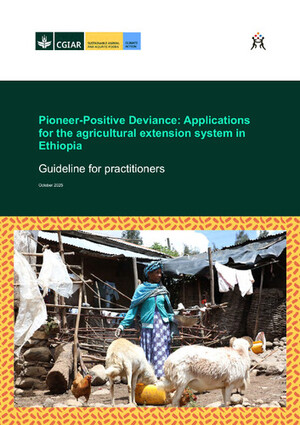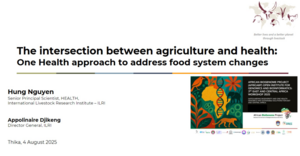
No laughing matter: Livestock enclosures in Africa are an underestimated source of the greenhouse gas N2O
An international team of scientists have now identified previously unknown sources of nitrous oxide (N2O) in sub-Saharan Africa
Sub-Saharan Africa is home to about a quarter of the world’s cattle, goats and sheep—a share that is expected to grow considerably in coming decades. Most of these livestock live in semi-arid and arid environments, where they roam during the day and are kept in enclosures (or bomas, as they are known in East Africa) to protect them from wildlife predators at night. The manure that accumulates in these pens, although rich in nitrogen, is rarely used by pastoralists, and therefore piles up, sometimes several meters high.
 This drawing depicts a traditional ololili dry-season forage reserve maintained by Tanzania’s pastoral Maasai community, with images of a Maasai kraal homestead (upper left) and communal herding (upper right) (illustration from Ch. 14 of A Different Kettle of Fish? Gender Integration in Livestock and Fish Research, edited by R Pyburn and A van Eerdewijk, LM Publishers, Volendam, 2016).
This drawing depicts a traditional ololili dry-season forage reserve maintained by Tanzania’s pastoral Maasai community, with images of a Maasai kraal homestead (upper left) and communal herding (upper right) (illustration from Ch. 14 of A Different Kettle of Fish? Gender Integration in Livestock and Fish Research, edited by R Pyburn and A van Eerdewijk, LM Publishers, Volendam, 2016).
Unfortunately, manure releases nitrous oxide (N2O), commonly known as laughing gas, as it composts. N2O is the third most important long-lived greenhouse gas, after carbon dioxide and methane, and contributes about 10% to the global greenhouse effect.
To understand how African bomas contribute to greenhouse gas emissions, a team of scientists at International Livestock Research Institute (Kenya), IHE Delft (the Netherlands), the Karlsruhe Institute of Technology [KIT] (Germany) and ETH Zurich (Switzerland) measured N2O emissions at seven different locations across Kenya at a total of 46 boma sites and at 22 adjacent savanna sites. Their paper, published this week in the journal Nature Communications, finds that even 40 years after the pens are abandoned, the manure pile still releases considerable amounts of N2O, ten times more than the normal savannah.
The calculations get complex quickly, but multiplying out these emissions by the total area occupied by newly abandoned bomas throughout sub-Saharan Africa, the team found that they contribute at least 5% to Africa’s total N2O emissions, a number that has doubled in the last 50 years and is expected to increase rapidly as the continent’s livestock numbers grow.
This is important because these emissions haven’t previously been taken into account in estimates for sources of atmospheric nitrous oxide, nor have emissions from abandoned animal pens in other semi-arid areas in the world. Accurate estimates of the sources of GHG are essential in the global effort to combat climate change.
The news about bomas is not all bad. Earlier studies have found that over time bomas long-lived nutrient hotspots producing vegetation preferred by both livestock and wild herbivores. More generally, traditional modes of pastoralism have been found compatible with long-term environmental and biodiversity concerns. Moreover, the authors indicated that with a little effort the accumulated manure might be used for restoring degraded savanna, or turned into high-quality fertilizer by mixing it with biochar. ‘There are multiple ways of usage and possibly opportunities for small business models,’ says paper author and joint KIT professor and ILRI advisor Klaus Butterbach-Bahl.
However, this latest research suggests that we need more understanding of animal contributions to greenhouse gas emission in similar landscapes.



















